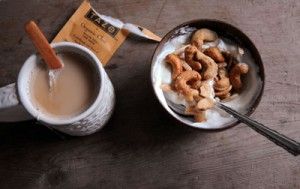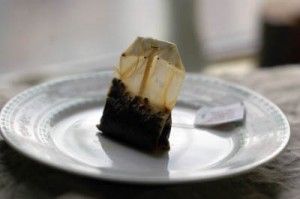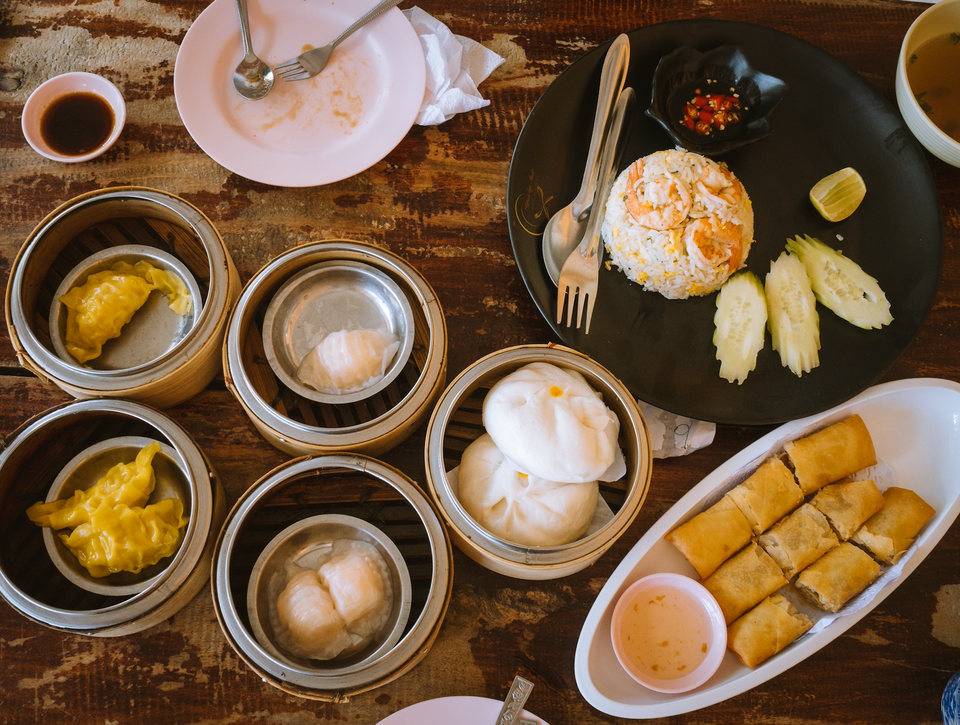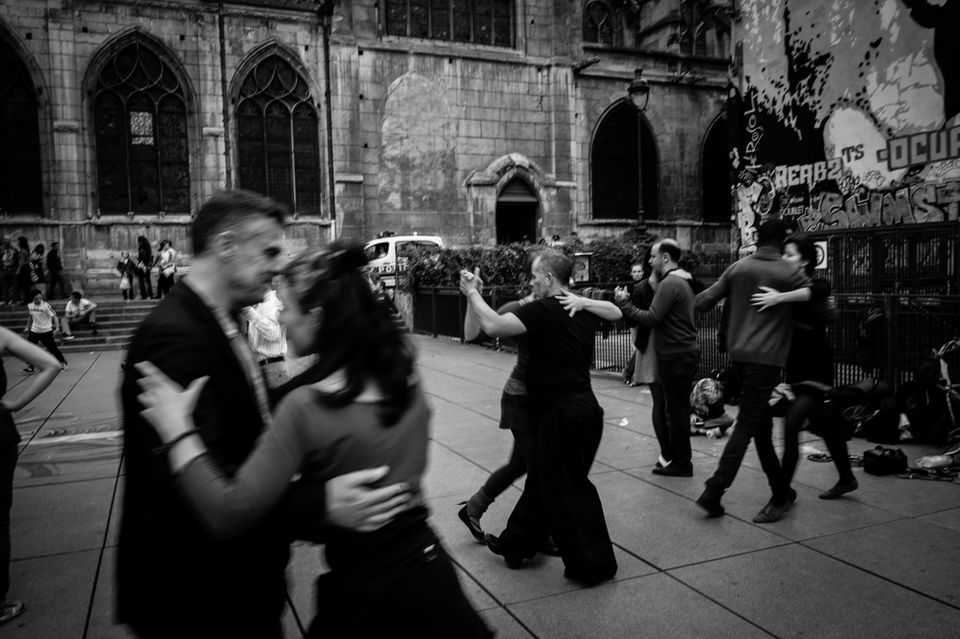As we remember the tragedies of September 11, 2001, Jenni Simmons offers a reminder of the small rituals that comfort and root us. This essay originally appeared in The Curator on November 28, 2008.
In some circles, I’m known as the “Tea Lady,” and this cutesy moniker is all my fault. I drink copious amounts of tea, both steaming and iced. I’ve stashed at least forty varieties of tea in my pantry (no kidding). I write about tea ad nauseam on my blog, as if what I’m drinking is late-breaking news. When I mail a card to a friend, I feel compelled to insert a tea bag in the envelope. I do love and drink coffee, but seeing as it’s quite a jolt to my genetic constitution, I’ve decided that if I must become dependent on a beverage, tea will be the one.
What’s interesting about this obsession is that my introduction to tea is sketchy. My parents were not big tea drinkers. My grandmother hated tea; coffee was rationed during WWII, so she remained fiercely loyal to coffee, determined to drink her fair share. My best guess is that I was smitten with tea while visiting my uncle in Detroit. He took my family to an Ethiopian restaurant where not only did my love for exotic food begin, but I drank glass after glass of spiced iced tea, strong on the cinnamon. Later during college, I visited my boyfriend’s house and his aunt offered me a toasty cup of Morning Thunder tea, a kind gesture that warmed me to his family as well. Frequenting a local Vietnamese restaurant a few years ago may have sealed the deal. After steamed spring rolls and peanut sauce, my friends and I ordered a teapot of jasmine green and sipped and chatted until delicate tea leaves graced the bottom of our small white cups.
It shouldn’t surprise you that I’ve read up on tea since I’m both bookish and a bit tea-crazy. It is the stuff of creation myths and other legends, steeped in the mountains of the East. Taoist alchemists considered the “froth of the liquid jade” to be an elixir of immortality. By way of oral tradition, Buddhist priests passed down fanciful tales of monkeys scampering the heights of mountains to gather wild tea leaves from among perilous rocks. Ancient Chinese connected tea to central themes in philosophy and literature, and the Japanese did likewise within haiku. I’m particularly fond of two by Matsuo Basho, the most famous poet of Japan’s Edo period.
A monk sips morning tea,
it’s quiet,
the chrysanthemum’s flowering.
Enduring poverty in life
I prepare a fire on the hearth
and enjoy the profound touch of tea.
Such descriptions incorporated tea as a symbol of a higher good, a spiritual touchstone, and an exemplary way of life. Eastern religious influence on the popularity of tea is more widespread, yet a little known fact is that Christianity also inspired the art of tea. Though the Chinese were notoriously secretive about their tea customs, they granted initial, partial access to Portuguese Jesuit missionaries in the 1500-1600s who became advocates of tea to the outside world. I suppose they seemed more trustworthy compared to some, and their reports did influence the early trade of tea, especially to Europe.

In Makoto Fujimura’s exquisite essay, “Psalms and Lamentations: Fallen Towers and the Art of Tea” (IMAGE journal, Issue 32), I learned about Sen-no-Rikyu, a sixteenth-century tea master who is historically considered to have the most profound effect on the Japanese tea ceremony. The Chinese used tea for celebration and banqueting, but Rikyu transformed the ritual of tea to one of communication. One of Rikyu’s wives was an early Japanese convert to Christianity, and as he accompanied her to Mass in Kyoto he was forever inspired by the Eucharistic cup of Christ’s blood passed from person to person. This sparked his vision: no matter if they be man or woman, a high-ranking official or a farmer, a cup of green tea would be passed to each participant in a tea house of peace. Shogun Hideyoshi recognized rightly that the egalitarian nature of tea would destroy his power, so he eventually ordered Rikyu to commit suicide in his own tea house. But Rikyu defined essential principles of the tea ceremony that remain to this day: minimalism, simplicity, purity, harmony, love of nature, graceful composure, politeness, and an eye for aesthetics — particular utensils, and usually a simple painting and fresh flowers. In keeping the ceremony basic, he did away with previous ostentation and kept it within the financial means of the middle-classes.
I’ve never taken part in a Japanese tea ceremony, but I’d love to some day. Until then, I sense the ritualistic aspects of tea within the comforts of my home. I often light a stick of incense. I scoop loose tea into a filter or peel open a tea bag. I select a particular teacup or mug, maybe a bamboo spoon, and I wait. I listen to the rustle of boiling water, and admire the sunlight and foliage right outside my window. I try to be still, view art on the walls of our home, and soak in my surroundings. When the kettle suddenly sings, I pour piping hot water over the bits of tea, the steam warming my face, a prayer often escaping my lips. There is something inherently meditative and beautiful about tea, from the nuanced aromatherapy to a liquid palette of orange, green, red, sepia, and even gold. My own little ceremony is a subtle jump into the day, a respite from my work upstairs, or a vespers of sorts at dusk — almost liturgical, and very therapeutic.
Like Sen-no-Rikyu, I, too, glean inspiration from the Eucharistic table, the ultimate form of hospitality. When we host friends or family in our home, we offer food and drink. Most of our friends prefer coffee, but some of the females are fellow tea lovers.Whether I prepare a single mug of their choice or a teapotful, I think of my priest repeating Christ’s kind beckoning each Sunday, “Come to Me, all who are weary and heavy-laden, and I will give you rest.” And as I learned from my ex-boyfriend’s aunt several years ago, offering a cup of tea makes one feel welcome and at ease without speaking a word. So if my friend takes honey, I stir it in and share the cup to communicate, “Feel at home, be restored, and be well.”
Now, back to my impressive stockpile of tea, some of my favorite brews have been an introduction and a way to familiarize myself with other cultures. For instance, the Camellia sinensis plant is originally a gift from China. This flowering evergreen shrub gives us green tea (unfermented), black tea (fermented), oolong (semi-fermented), and white tea, which is fast-dried versus the roasting of green tea in an oven or pan. I also take a liking to Assam tea and chai from India, Earl Grey from England, rooibos from South Africa, yerba mate from South America, hibiscus mint tea from northern Sudan, Thai iced tea, and any number of herbal blends with ingredients cultivated from soil around the globe or in my own country. Oh, and I crave quirky bubble tea which originated in Taiwan.

These cross-cultural aspects not only cause me to daydream of world travel, but such diversity also teaches me about human nature. Since the beginning, humanity has explored and cultivated the land, charged to beautify and to survive. As I type, I’m enjoying a mug of yerba mate, a cinnamon stick soaking in the brew. I can’t help but wonder, which South American soul came across this species of holly and thought to steep it in hot water? Hollow out a gourd for the drinking? How did they determine the numerous health benefits long before our current scientific methods and technology? Perhaps these feats are what we’re innately capable of as creative beings. We discover plants, herbs, and florals, and imaging the Creator, we develop them. We invent ways to pinpoint temperatures of water for brewing, hone each flavor to perfection, stamp our cultures with a unique tea, and unearth its medicinal benefits, heeding the adage to “heal thyself” along with our neighbors.
A grocery store’s tea aisle lures me in with all the exotic artistry to be found in a cup. Beauty is a requirement in my life, most definitely including the culinary realm. And each blend of tea conjures endless possibilities. Humankind has pursued the art of tea century upon century, so I love to imagine what else our hands will gather and create, and offer to one another. I think of my friend’s daughter, who once lived for any excuse to throw a make-believe tea party when I dropped by her house. Her face lit up with the delight of sharing invisible draughts of tea, cream, and sugar cubes. She laughed with joy if I asked for a refill in the little pink cup. Even at her young age, she sensed our design to serve others and to enjoy refreshment. How good it is to heal each other, bring ceremony into our homes, employ the art of waiting, share a cup, and take a drink ourselves, just for the sheer pleasure of a spot of tea.
For further reading: The Book of Coffee and Tea: Second Revised Edition by Joel, David, and Karl Schapira
I endorse the following tea suppliers (among many others):
• Adagio Teas
• Mighty Leaf Tea
• Traditional Medicinals
• Yogi Tea
To see more of Jennifer Causey’s photography, please visit her web site.




